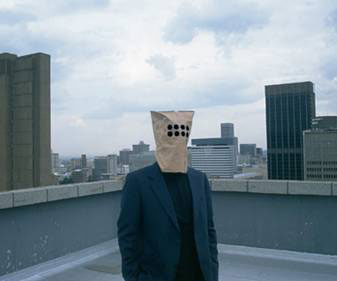The New Spell
June 5 – July 30, 2008

David Krut Projects, New York is pleased to present The New Spell, a group exhibition of contemporary South African art curated by Lucy Rayner. The participating artists include Nandipha Mntambo, Michael MacGarry, Maja Maljevic, Themba Shibase, Nina Barnett and Robyn Nesbitt.
With a certain shift in tone, an equivocal and satirical vocabulary has developed within the language of recent South African art. Artists are teasingly subverting contemporary politics and societal norms with a liberated sense of detachment and satiric self-reflexivity. The resultant works are consciously current, sometimes self-consciously hip, and self-consciously oppositional. Bringing together the work of six artists who share an affinity for a particularly vulgar aesthetic, The New Spell aims to consider one of the many enlivening tendencies within this approach. The exhibition explores how the grotesque is exercised through works of art to reveal the fetish within contemporary South African social and political relations of power. By contemplating the grotesque within works by Nandipha Mntambo, Michael MacGarry, Maja Maljevic, Themba Shibase, Nina Barnett and Robyn Nesbitt, The New Spell hopes to invite viewers to consider relations of power in South Africa with a greater sense of intimacy – and perhaps even humour – by moving beyond the binary categories such as autonomy versus subjection or resistance versus passivity. The works on exhibition kidnap instances of the fetish and force them to examine their own vulgarity, exposing ways in which official culture in South Africa is characterized by a distinctive style of improvisation, by a tendency to excess and lack of proportion.
The grotesque is not usually difficult to identify in a work of art, but it can be challenging to define the term itself. What most definitions share is a sense of ambiguity and paradox. Used here with reference to literary theorist Mikhail Bakhtin’s egalitarian interpretation of the medieval Carnival, the grotesque object or situation may contain recognisable elements, yet in its entirety, it conflicts with systems of decorum and preconceived notions of what is reasonable or possible. It also violates principles of identity and difference where identity depends on the definition and difference of the other. In conversation, grotesque commonly means strange, fantastic, ugly or bizarre, and thus is often used to describe peculiar shapes and distorted forms. In fiction, characters are usually considered grotesque if they induce both empathy and disgust, where the reader becomes piqued by the grotesque’s positive side, and continues to see if the character can conquer their darker side. This element of empathy is important as each of the artists show a capacity simultaneously to show affection for something and to think critically about it. As a result, their works appear as if matured with a degree of sympathy.
For more information, please email [email protected].